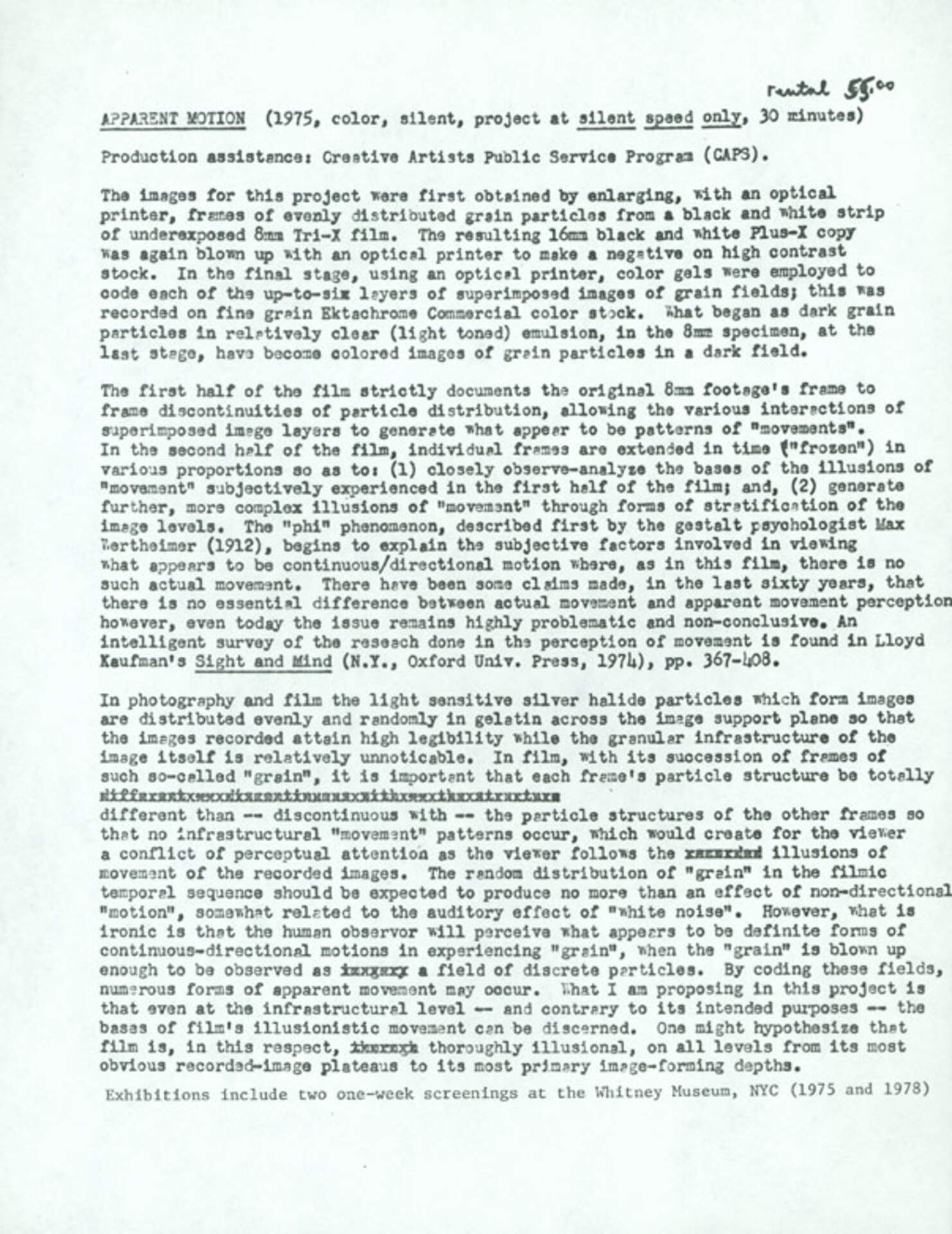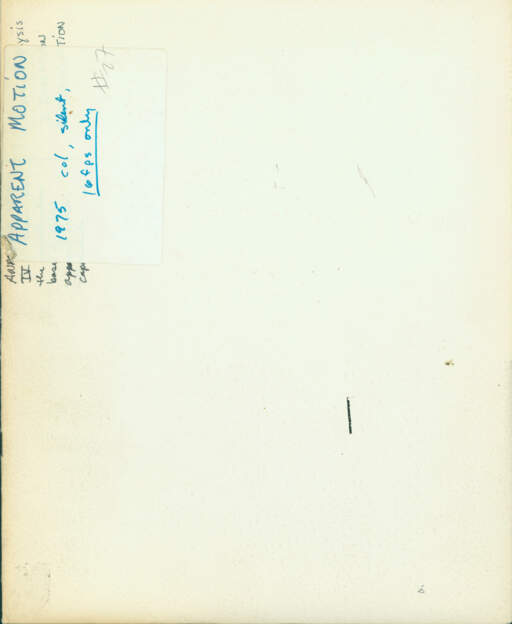Paul Sharits (1943-1993)Untitled (Apparent Motion)
c. 1971-1976
printed ink on paper
11 x 8 1/2 inches
Gift of Christopher and Cheri Sharits, 2006
APPARENT MOTION (1975, color, silent, project at silentspeedonly, 30 minutes) rental $60.00
Production assistance: Creative Artists Public Service Program (CAPS).
The images for this project were first obtained by enlarging, with an optical printer, frames of evenly distributed grain particles from a black and white strip of underexposed 8mm Tri-X film. The resulting 16mm black and white Plus-X copy was again blown up with an optical printer, color gels were employed to code each of the up-to-six layers of superimposed images of grain fields; this was recorded of fine grin Ektachrome Commercial color stock. What began as dark grain particles in relatively clear (light toned) emulsion, in the 8mm specimen, at the last stage, have become colored images of grain particles in a dark field.
The first half of the film strictly documents the original 8mm footage’s frame to frame discontinuities of particle distribution, allowing the various interactions of superimposed image layers to generat4e what appear to be patterns of “movements”. In the second half of the film, individual frames are extended in time (“frozen”) in various proportions so as to: (1) closely observe-analyze the bases of the illusions of “movement” subjectively experienced in the first half of the film; and, (2) generate further, more complex illusions of “movement” through forms of stratification of the image levels. The “phi” phenomenon, described first by the gestalt psychologist Max Wertheimer (1912), begins to explain the subjective factors involved in viewing what appears to be continuous/directional motion where, as in this film, there is no such actual movement. There have been some claims made, in the last sixty years, that there is no essential difference between actual movement and apparent movement perception however, even today the issue remains highly problematic and non-conclusive. And intelligent survey of the research done in the perception of movement is found in Lloyd Kaufman’s Sight and Mind (N.Y., Oxford Univ. Press, 1974), pp. 367-408.
In photography and film the light sensitive silver halide particles with form images are distributed evenly and randomly in gelatin across the image support plane so that the images recorded attain high legibility while the granular infrastructure of the image itself is relatively unnoticeable. In film, with its succession of frames of such so-called “grain”, it is important that each frame’s particle structure be totally different than – discontinuous with – the particle structures of the other frames so that no infrastructural “movement” patterns occur, which would create for the viewer a conflict of perceptual attention as the viewer follows the illusions of movement of the recorded images. The random distribution of “grain” in the filmic temporal sequence should be expected to produce no more than an effect of non-directional “motion”, somewhat related to the auditory effect of “white noise”. However, what is ironic is that the human observer will perceive what appears to be definite forms of continuous-directional motions in experiencing “grain”, when the “grain” is blown up enough to be observed as a field of discrete particles. By coding these fields, numerous forms of apparent movement may occur. What I am proposing in the project is that even at the infrastructural level – and contrary to its intended purposes – the bases of film’s illusionistic movement can be discerned. One might hypothesize that film is in this respect, thoroughly illusional, on all levels from its most obvious recorded-image plateaus to its most primary image-forming depths.
Exhibitions include two one-week screenings at the Whitney Museum, NYC (1975 and 1978)


